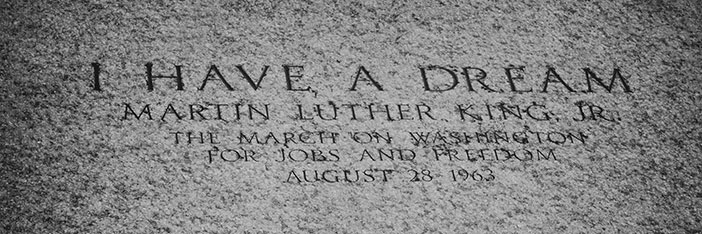When we consider the monumental speeches that have shaped the trajectory of civil rights in America, Dr. Martin Luther King Jr.’s “I Have a Dream” speech invariably springs to mind. Yet, few people recognize that behind this celebrated oration lies another significant speech—one that is frequently overlooked yet bears profound implications for our understanding of justice and community. It beckons the question: what happens when a powerful message fades into obscurity? In the case of Dr. King’s “The Other America,” his lesser-known oration, this question transcends mere curiosity to challenge our collective memory.
“The Other America,” delivered in 1967, poignantly addresses the stark disparities between the lives of the affluent and the impoverished. This discourse presents a profound inquiry: How can we genuinely claim to uphold the tenets of democracy and equality while neglecting the plight of those marginalized in our society? As listeners delved into his evocative rhetoric, they were prompted to confront uncomfortable truths. The dissonance between the idyllic American Dream and the harsh realities faced by millions materialized through Dr. King’s candid exposition of systemic inequities.
In this speech, Dr. King articulates a dual narrative of America: a prosperous nation thriving in wealth and opportunities, juxtaposed against an America steeped in poverty, desperation, and disenfranchisement. His vivid imagery paints a landscape riddled with strife—where neighborhoods exist that are devoid of hope and where the promise of prosperity remains an elusive mirage for countless individuals. This juxtaposition compels the audience to scrutinize the foundations of societal structures, laying bare the uncomfortable truth that systemic injustice remains an indelible mark on the American identity.
The concept of “The Other America” serves as an ideal springboard for discussing Bahá’í teachings, specifically the principles of unity, equity, and justice. These core tenets parallel Dr. King’s exhortations for societal reform and collective improvement. Bahá’ís are called to challenge the status quo by actively promoting social and economic justice. For them, the tenet of unity extends beyond mere tolerance; it embodies active engagement in dismantling barriers that perpetuate inequality. Hence, an intriguing inquiry emerges: In what ways can the followers of Bahá’í teachings draw inspiration from Dr. King’s oration to foster substantive change?
One of the most compelling aspects of Dr. King’s narrative is its radical inclusivity. He beckons individuals from all walks of life to join a collective quest for equality. This notion harmonizes seamlessly with Bahá’í principles that espouse the oneness of humanity. The call to action is resounding: it is not enough to acknowledge disparities; there exists an ethical imperative to illuminate the darkness of ignorance and indifference, advancing toward a horizon of compassion and solidarity.
Moreover, King’s address serves as a clarion call for action. He implores his audience to recognize their moral agency within the broader societal tapestry. Aligning with Bahá’í teachings, this proactive stance underscores the importance of community involvement. Activities such as grassroots organizing, educational initiatives, and service-oriented projects become vital means through which this advocacy can be manifested.
Furthermore, Dr. King’s poignant examples serve as a reminder that moral courage is essential in confronting the uncomfortable truths of our society. The courage to speak up, to advocate, and to act is central to both his speech and Bahá’í teaching alike. A crucial inquiry arises here: How can the Bahá’í community amplify its voice in the discourse surrounding social justice and equity? By thoughtfully and tenaciously engaging in dialogues, Bahá’ís can bridge divides and catalyze awareness, pressing forward in the administration of justice for all.
Dr. King’s candid exploration of poverty and inequality transcends the confines of temporal social justice movements. His insights illuminate the universal implications for any society grappling with issues of injustice. The Bahá’í approach posits that a holistic and inclusive method is paramount in addressing global challenges. The unity of science and religion, taught within Bahá’í doctrine, reinforces the supposition that societal ills can be remedied through empirical understanding paired with ethical imperatives.
Additionally, King’s address in “The Other America” provides a deeply resonant critique of consumerism and materialism. He elucidates how an overabundance of wealth generates a culture indifferent to suffering. Such reflections align with Bahá’í perspectives which advocate for moderation and a balanced approach to material and spiritual prosperity. The inherent question remains: how can a society, particularly one with substantial material wealth, shift its focus towards nurturing the spiritual and ethical dimensions of life? The Bahá’í teachings offer a navigational compass for this quest, imploring adherents to prioritize service to humanity over mere material gain.
In conclusion, Dr. King’s “The Other America” serves as an indelible reminder of the labor still required in the pursuit of justice and equality. Its relevance extends beyond its initial historical context, inviting us to engage actively in the ongoing dialogue surrounding social equity. For the Bahá’í community, integrating Dr. King’s values with their own teachings empowers them to foster unity, promote social justice, and encourage proactive engagement against systemic injustices. As we reflect upon these teachings and their implications, we must confront the ultimate question: will we allow the wisdom of those forgotten voices to inspire a future grounded in equity and compassion, or will we continue to let them fade into the background of history? The answer lies in our readiness to act and strive for a more just world for all.
